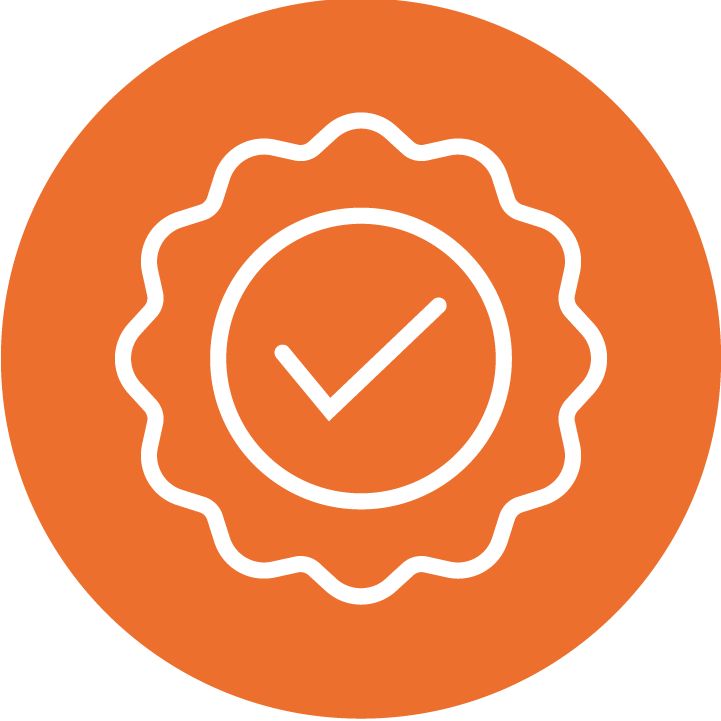How to Get Started with Transcutaneous Monitoring in the NICU
How to Get Started with Transcutaneous Monitoring in the NICU
How to Get Started with Transcutaneous Monitoring in the NICU
A guide to beginning to monitor patients’ CO2 levels
Introducing any new technology in a clinical setting can be an exciting time – you’re eager to use your new tool and see the benefits for patients – especially in the NICU where the smallest, sickest babies are.
However, don’t be afraid to start slow. It can be helpful to think of the initial month or so after the installation of your new Sentec transcutaneous monitoring system as a training phase. Infants in the NICU (especially micro- and nano-preemies) are fragile, difficult patients to manage with almost every technology, including transcutaneous CO2 monitoring.
We recommend that you visualize your first few months with your transcutaneous monitoring device by creating your own implementation timeline. You can use the below timeline as a guide.
By Margie White, BS, RRT-NPS
A guide to beginning to monitor patients’ CO2 levels
Introducing any new technology in a clinical setting can be an exciting time – you’re eager to use your new tool and see the benefits for patients – especially in the NICU where the smallest, sickest babies are.
However, don’t be afraid to start slow. It can be helpful to think of the initial month or so after the installation of your new Sentec transcutaneous monitoring system as a training phase. Infants in the NICU (especially micro- and nano-preemies) are fragile, difficult patients to manage with almost every technology, including transcutaneous CO2 monitoring.
We recommend that you visualize your first few months with your transcutaneous monitoring device by creating your own implementation timeline. You can use the below timeline as a guide.
By Margie White, BS, RRT-NPS
![]()
Phase I
Prepare and Plan
![]()
Phase I
Prepare and Plan
Once you have decided to implement Sentec Transcutaneous Monitoring technology in your clinical setting, you will need a logistical strategy planning period. Before the device(s) arrives, you should plan for how your monitors will be placed at the bedside and which team members will receive what types of training. You will need to determine how your devices will be stored when not in use and where and how that will be done (as a reminder, Sentec recommends keeping the devices powered on!).
These are all conversations that your Sentec representatives – your sales representative and your clinical application specialist – can support. They will be vital resources to you as you begin this process, and can provide you with our comprehensive Implementation Guide, which will walk you through every step of adopting this technology.
![]()
Phase I
Prepare and Plan
Once you have decided to implement Sentec Transcutaneous Monitoring technology in your clinical setting, you will need a logistical strategy planning period. Before the device(s) arrives, you should plan for how your monitors will be placed at the bedside and which team members will receive what types of training. You will need to determine how your devices will be stored when not in use and where and how that will be done (as a reminder, Sentec recommends keeping the devices powered on!).
These are all conversations that your Sentec representatives – your sales representative and your clinical application specialist – can support. They will be vital resources to you as you begin this process, and can provide you with our comprehensive Implementation Guide, which will walk you through every step of adopting this technology.
![]()
Phase II
Install and Train
![]()
Phase II
Install and Train
Once the Sentec Transcutaneous Monitoring System arrives, take some time to familiarize your staff with the devices and how the system works. Based on your work in Phase Zero, ensure that your staff receives the appropriate training they need to be able to make the most of this new technology. Be sure to allot enough time for training for your team, to ensure that your team members are comfortable and familiar with the monitoring system, and to make the most use of your Sentec support personnel when they are on-site.
Hospitals and clinical environments vary – check in with your existing protocols and guidelines to ensure that everyone who needs to be involved with your implementation process has been looped in. This may include your Biomedical Department and/or other stakeholders.
Consult your Implementation Guide and Sentec staff (like your sales representative and clinical application specialist) often during this time to help ensure a smooth adoption.
![]()
Phase II
Install and Train
Once the Sentec Transcutaneous Monitoring System arrives, take some time to familiarize your staff with the devices and how the system works. Based on your work in Phase Zero, ensure that your staff receives the appropriate training they need to be able to make the most of this new technology. Be sure to allot enough time for training for your team, to ensure that your team members are comfortable and familiar with the monitoring system, and to make the most use of your Sentec support personnel when they are on-site.
Hospitals and clinical environments vary – check in with your existing protocols and guidelines to ensure that everyone who needs to be involved with your implementation process has been looped in. This may include your Biomedical Department and/or other stakeholders.
Consult your Implementation Guide and Sentec staff (like your sales representative and clinical application specialist) often during this time to help ensure a smooth adoption.
![]()
Phase III
Stable Patients
![]()
Phase III
Stable Patients
Neonatologist Dr. Oliver Gӧtz suggests it may be wise to monitor a specific, larger, more stable group of patients while your team learns the ins and outs of the technology and device. In this webinar, Dr. Götz urges practitioners to consider beginning with 27-32 week GA preterms who are intubated but relatively stable, for instance.
Because these patients generally have good perfusion, you can expect that their correlation will be strong. These infants are large enough that site selection is likely to be less challenging and mature enough that their incubators are less humid, resulting in better adhesion of attachment rings.
These infants, though less fragile, still benefit from optimized ventilation, fewer blood draws, and neuroprotective, low-stimulation care, and your team can take some time to get used to utilizing the technology while caring for these patients. This is the right time to gather information about which site placements, workflows, and other best practices work for your team.
![]()
Phase III
Stable Patients
Neonatologist Dr. Oliver Gӧtz suggests it may be wise to monitor a specific, larger, more stable group of patients while your team learns the ins and outs of the technology and device. In this webinar, Dr. Götz urges practitioners to consider beginning with 27-32 week GA preterms who are intubated but relatively stable, for instance.
Because these patients generally have good perfusion, you can expect that their correlation will be strong. These infants are large enough that site selection is likely to be less challenging and mature enough that their incubators are less humid, resulting in better adhesion of attachment rings.
These infants, though less fragile, still benefit from optimized ventilation, fewer blood draws, and neuroprotective, low-stimulation care, and your team can take some time to get used to utilizing the technology while caring for these patients. This is the right time to gather information about which site placements, workflows, and other best practices work for your team.
![]()
Phase IV
Assess and Adjust
![]()
Phase IV
Assess and Adjust
Before moving to monitoring your most fragile patients, plan to review how the implementation is progressing. Evaluate your team’s learnings: how effective has training been? Is everyone performing the appropriate roles? Are the logistics of your strategy working?
There may be adjustments to be made in order to optimize your team’s performance and comfort with their new technology. Around roughly the 30- to 60-day mark*, take time to consult all of the relevant stakeholders and team members on their experiences; this will help to ensure that any changes you make are as smooth and valuable as possible.
This is also a good time to perform routine maintenance on your Sentec transcutaneous monitoring system and ensure that your move-forward plan for proactive maintenance is in place.
* Timelines and exact needs will vary from team to team; we recommend working with your sales representative and clinical application specialist to develop useful, planned benchmarks in your implementation.
![]()
Phase IV
Assess and Adjust
Before moving to monitoring your most fragile patients, plan to review how the implementation is progressing. Evaluate your team’s learnings: how effective has training been? Is everyone performing the appropriate roles? Are the logistics of your strategy working?
There may be adjustments to be made in order to optimize your team’s performance and comfort with their new technology. Around roughly the 30- to 60-day mark*, take time to consult all of the relevant stakeholders and team members on their experiences; this will help to ensure that any changes you make are as smooth and valuable as possible.
This is also a good time to perform routine maintenance on your Sentec transcutaneous monitoring system and ensure that your move-forward plan for proactive maintenance is in place.
* Timelines and exact needs will vary from team to team; we recommend working with your sales representative and clinical application specialist to develop useful, planned benchmarks in your implementation.
![]()
Phase V
Expand Patient Monitoring
![]()
Phase V
Expand Patient Monitoring
Once your team is confident in using and maintaining your Sentec transcutaneous monitoring system, you’re ready to expand patient selection to include your most fragile NICU patients.
Again, the exact timeline for this will depend heavily on your team and institutional environment. Your timeline should be directive, but still flexible, as you may need to adjust based on your team’s experiences.
As with all phases, your Sentec representatives will be alongside you at each step of this process, and can help you with any pain points or difficulties your team may encounter in your implementation process.
![]()
Phase V
Expand Patient Monitoring
Once your team is confident in using and maintaining your Sentec transcutaneous monitoring system, you’re ready to expand patient selection to include your most fragile NICU patients.
Again, the exact timeline for this will depend heavily on your team and institutional environment. Your timeline should be directive, but still flexible, as you may need to adjust based on your team’s experiences.
As with all phases, your Sentec representatives will be alongside you at each step of this process, and can help you with any pain points or difficulties your team may encounter in your implementation process.
![]()
Phase VI
Standardizing Your Process
![]()
Phase VI
Standardizing Your Process
What will your process and direction be for your transcutaneous monitoring program?
It’s a question that can help guide your team through the standardization of your protocols for transcutaneous monitoring. Formalizing your program will allow additional staff to begin to understand the importance of CO2 monitoring and how to identify cases where it may be important or useful. At the Milton S. Hershey Medical Center at Penn State Health, a Level-IV NICU, standardization of an implementation process was a major factor in proving that “with the right education and implementation, transcutaneous monitoring can be an effective tool for ventilator management and reducing blood draws in the NICU.”
All respiratory care patients can benefit from CO2 monitoring – how might your most complicated patients see positive results from being included in your transcutaneous monitoring program? Infants born at extremely low birth weights and even those on ECMO may be potential candidates for inclusion as your program expands. Consider your next steps as a part of your standardization process.
What’s Next?
If you’re ready to start thinking about implementing a transcutaneous CO2 monitoring program at your facility, your local Sentec representative can help you begin to have the conversations that make implementation possible. Reach out to us here
![]()
Phase VI
Prepare and Plan
What will your process and direction be for your transcutaneous monitoring program?
It’s a question that can help guide your team through the standardization of your protocols for transcutaneous monitoring. Formalizing your program will allow additional staff to begin to understand the importance of CO2 monitoring and how to identify cases where it may be important or useful. At the Milton S. Hershey Medical Center at Penn State Health, a Level-IV NICU, standardization of an implementation process was a major factor in proving that “with the right education and implementation, transcutaneous monitoring can be an effective tool for ventilator management and reducing blood draws in the NICU.”
All respiratory care patients can benefit from CO2 monitoring – how might your most complicated patients see positive results from being included in your transcutaneous monitoring program? Infants born at extremely low birth weights and even those on ECMO may be potential candidates for inclusion as your program expands. Consider your next steps as a part of your standardization process.
What’s Next?
If you’re ready to start thinking about implementing a transcutaneous CO2 monitoring program at your facility, your local Sentec representative can help you begin to have the conversations that make implementation possible. Reach out to us here
How The Penn State Level 4 NICU Implemented Transcutaneous Monitoring


